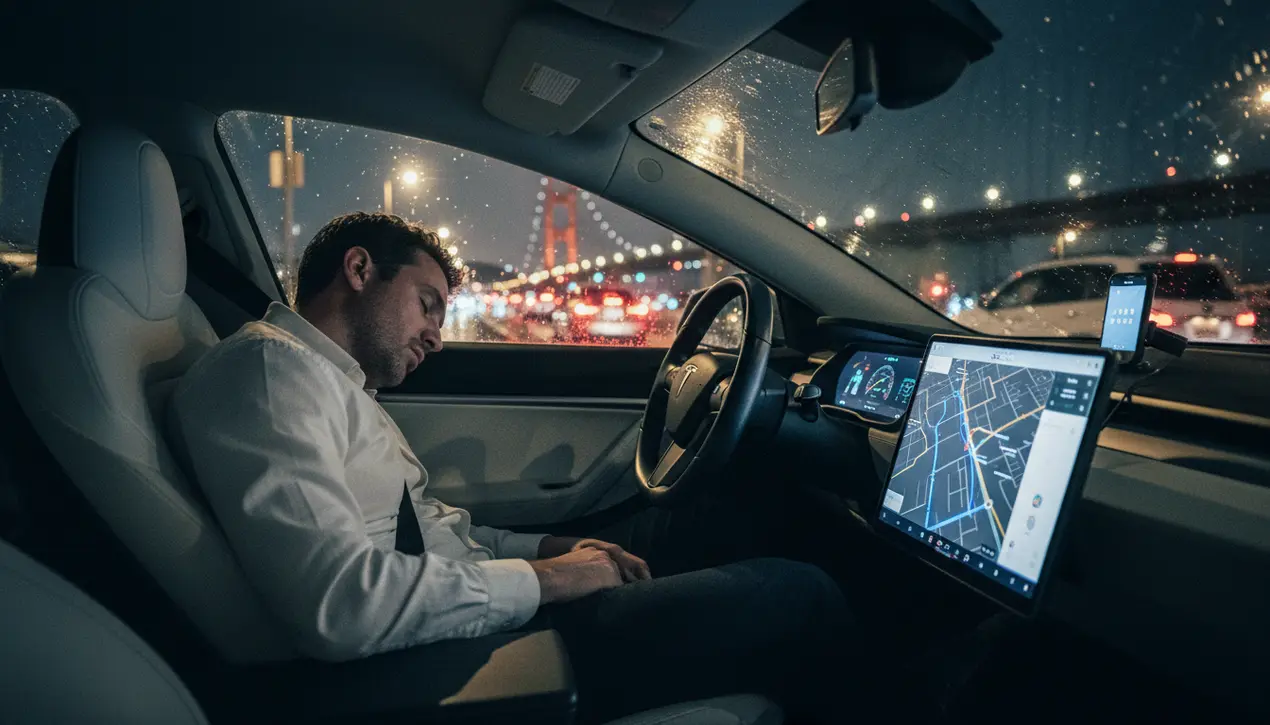
AIroboticsAutonomous Navigation
Tesla safety driver falls asleep during robotaxi ride.
JO
John Parker
2 hours ago7 min read1 comments
A chilling video surfaced on Reddit this week, capturing a scene that strikes at the very heart of the autonomous vehicle revolution's safety promises: a Tesla safety driver, the human failsafe in a robotaxi test, was seen slumped over and completely asleep at the wheel while the car navigated the complex urban landscape of San Francisco. This isn't just a viral moment; it's a five-alarm fire for the entire industry, a stark breach of protocol that raises fundamental questions about the readiness of this technology for public roads.The incident, filmed by a concerned passenger, immediately went viral, drawing condemnation from safety advocates and forcing a moment of reckoning for Tesla and its competitors. The core premise of a safety driver is to serve as a vigilant backup, a human expert ready to seize control in milliseconds when the AI encounters a scenario beyond its programming—a jaywalking pedestrian, an erratic cyclist, or sudden road construction.A sleeping driver is no driver at all; it transforms the test vehicle into a fully autonomous unit long before the software has been certified for such a responsibility. This failure echoes past, tragic incidents in the self-driving sector, most notably the 2018 Uber crash in Arizona where a distracted safety driver failed to intervene before a fatal collision.Regulatory bodies, primarily the National Highway Traffic Safety Administration (NHTSA) in the United States, are now almost certainly scrutinizing this event, which could precipitate stricter mandates on driver monitoring systems. These could include mandatory eye-tracking technology, physiological sensors to detect drowsiness, or even a two-driver system for extended testing shifts to combat fatigue.The reputational damage is immense; public trust, already fragile, is eroded with every such video, potentially slowing adoption and inviting more aggressive legislative pushback. For Tesla, which employs a 'shadow mode' fleet to gather data, the actions of its contracted drivers directly reflect on its brand and its ambitious Full Self-Driving (FSD) timeline.This episode serves as a brutal reminder that the path to full autonomy is not just a software challenge but a profound human factors problem, where the most unpredictable element in the vehicle may not be the AI, but the person meant to be supervising it. The industry must now confront an uncomfortable truth: perfecting the machine is only half the battle; ensuring the human in the loop remains engaged and responsible is a parallel crisis demanding an immediate and rigorous solution.
#Tesla
#robotaxi
#safety driver
#asleep
#autonomous vehicles
#San Francisco
#featured
Stay Informed. Act Smarter.
Get weekly highlights, major headlines, and expert insights — then put your knowledge to work in our live prediction markets.
Related News
Comments
Loading comments...
© 2025 Outpoll Service LTD. All rights reserved.